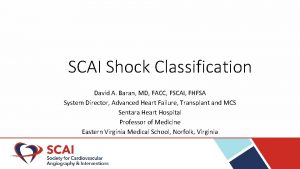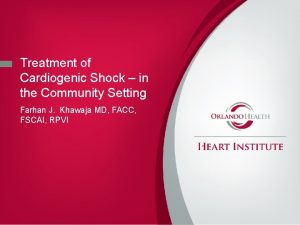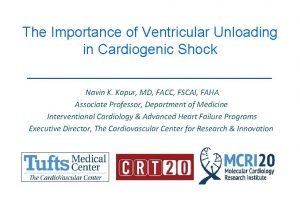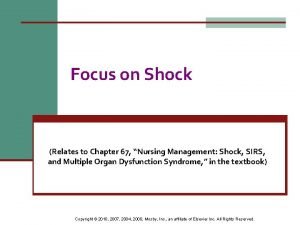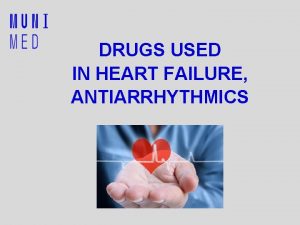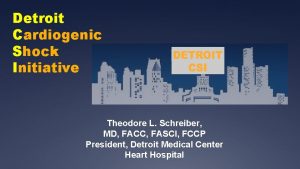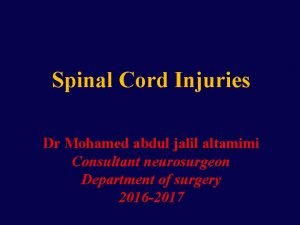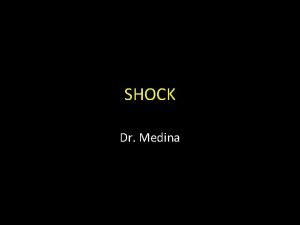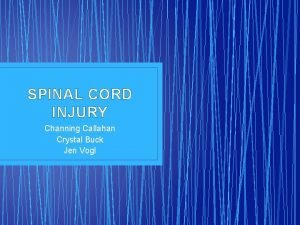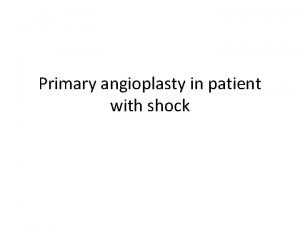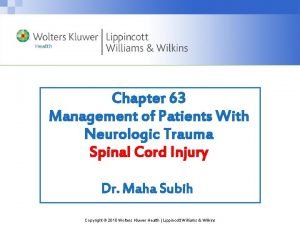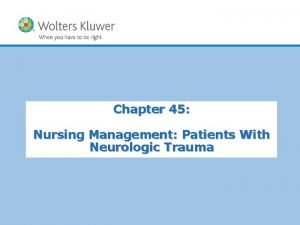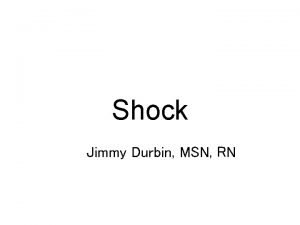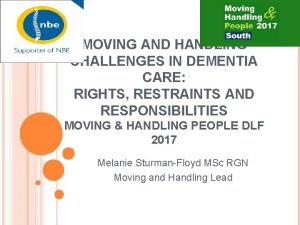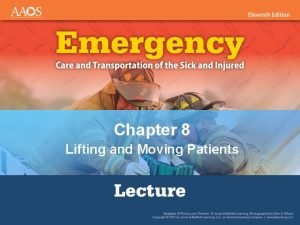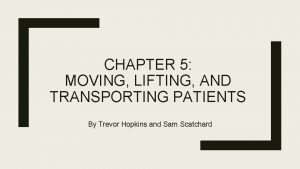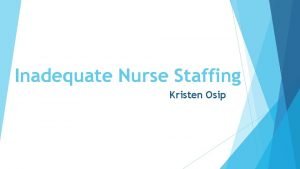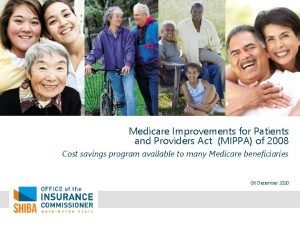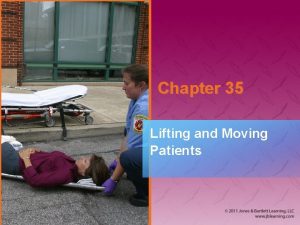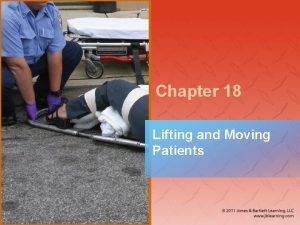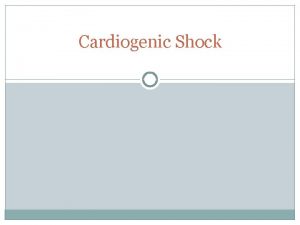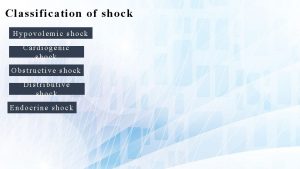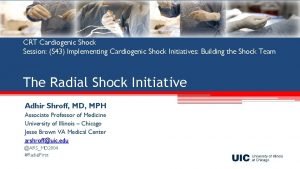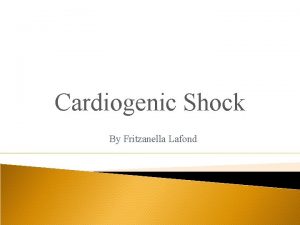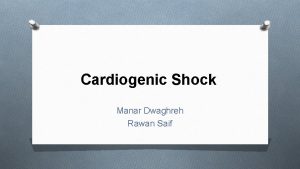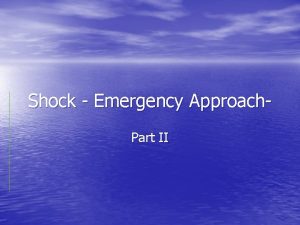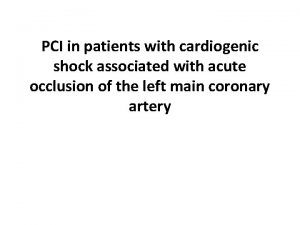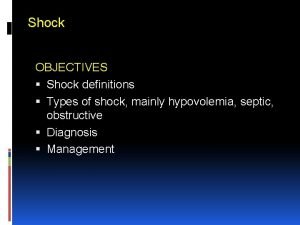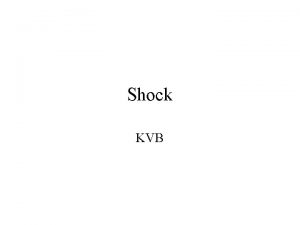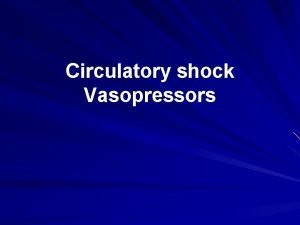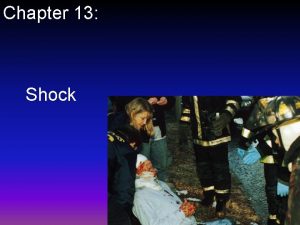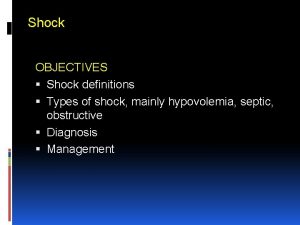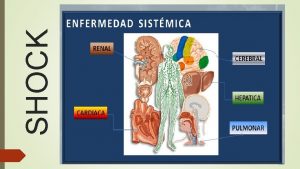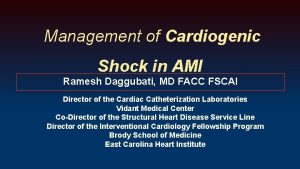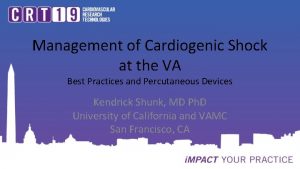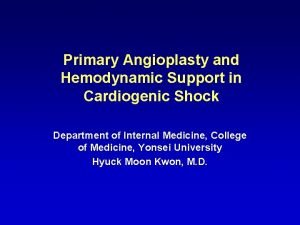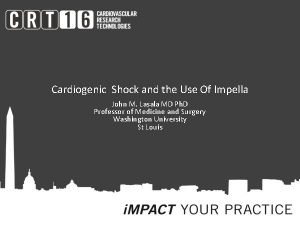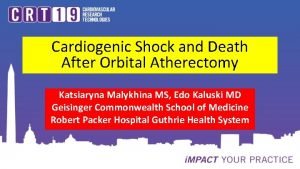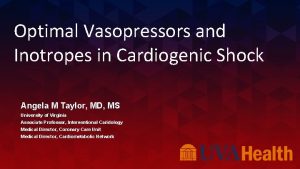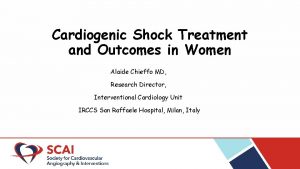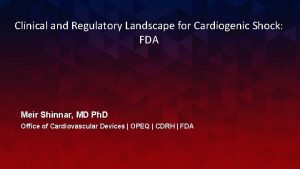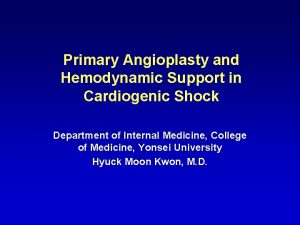Cardiogenic Shock and the Management of Patients with





























- Slides: 29

Cardiogenic Shock and the Management of Patients with Unstable Myocardial Infarction. For on site tutorials as part of remote simulation program Cardiac Module: C 8 This project was possible due to funding made available by Health Workforce Australia

Introductions November 20 © Health Workforce Australia

General Aims • Learn in a team setting • Blend clinical skills with team skills • Reflect critically on practice November 20 © Health Workforce Australia

Ground Rules • • • November 20 Participation Privacy Confidentiality Disclaimer Debriefing Mobile phones © Health Workforce Australia

Session Objectives • Clinical practice – Describe a method for assessment of causes and severity of cardiogenic shock – Describe emergency management options in patients with cardiogenic shock • Non-Technical Skills – Teamwork – Communication – Decision making – Situational awareness November 20 © Health Workforce Australia

Cardiogenic Shock November 20 © Health Workforce Australia

Objectives • Define Cardiogenic Shock • Describe method of assessment of cause and severity • Describe options for emergency management of the patient in cardiogenic shock November 20 © Health Workforce Australia

Cardiogenic Shock • “Circulatory insufficiency that creates an imbalance between tissue oxygen supply (delivery) and oxygen demand (consumption)…. . caused by inadequate cardiac pump function” • Mortality is high ~50% November 20 © Health Workforce Australia

Assessment • History – Breathlessness, PND, orthopnea, Chest pain, Syncope – Recent illness, Drug use – PMHx – AMI, valve disease, thyroid disease – FHx – HOCM, AS – Medication use, Allergies • Examination – Vital signs for haemodynamic instability, including BP, HR, RR, temperature – Signs of Cardiac Failure – Complications including valve rupture, effusion November 20 © Health Workforce Australia

Assessment • Investigations – Immediate – 12 lead ECG, BSL, FBC, EUC, CK, Troponin, Coags, LFTs, CMP, drug levels, VBG + lactate, CXR, (Bedside ultrasound) – Monitor – Vital signs continuously, Urine Output, Pain scale, lactate clearance, BSL – Further – UA, Echocardiogram, Coronary Angiogram November 20 © Health Workforce Australia

Management Goals • Improve oxygenation • Restore tissue perfusion • Treat the underlying cause – Commonly Acute Myocardial Infarction requiring revascularisation • Manage cardiovascular complications November 20 © Health Workforce Australia

Management • Oxygen – high flow via NRB • Non Invasive Ventilation – CPAP (Pressure 10 mm. Hg) • Increases intrathoracic pressure, decreasing venous return • Reduces preload and afterload, thus improving Cardiac Output in LVF • Reduces intubation rates • Improves symptoms • Caution in hypotensive patients • Endotracheal Ventilation November 20 © Health Workforce Australia

Management • Cautious fluid boluses • Vasoactive Agents – Dobutamine – Noradrenaline – Adrenaline – Dopamine – Milrinone – Vasodilator therapy November 20 © Health Workforce Australia

Management • • • Aspirin Clopidogrel Heparin Nitrates Reperfusion – Percutaneous Coronary Angioplasty – Coronary Artery Bypass Grafting – Thrombolysis November 20 © Health Workforce Australia

Management • Adjuncts for shock – Mechanical Support – Extra-Corporeal Membrane Oxygenation • Definitive Care • Disposition – Coronary Care Unit – High Dependency Unit – Intensive Care November 20 © Health Workforce Australia

Simulation - aims & ground rules • It’s about you learning in a team environment! • It’s about teamwork and communication • It’s about clinical skills blended with team skills • It’s about critical reflection on practice • It’s about positive feedback & constructive criticism • It’s confidential!

Non-Technical Skills • Teamwork • Effective Communication • Decision Making • Situational Awareness November 20 (C) Health Workforce Australia

Let’s Practice November 20 © Health Workforce Australia

The “Bat” Phone rings! November 20 © Health Workforce Australia

The Case • 0530 Sunday morning • Alf Stewart (75 -years-old, male) woke an hour ago with new onset of shortness of breath • The paramedics are en-route with Alf. They have initiated oxygen therapy; given 5 mg of salbutamol and cannulated Alf • Sats 95%, RR 35 • BP 100/60, HR 110 irregular November 20 © Health Workforce Australia

What would you like to prepare? November 20 © Health Workforce Australia

Paramedics Arrive • M – Alf woke at 0430 short of breath, light headed anxious. • I – He sounds Wheezy and has a strong history of ischaemic heart disease (previous CABG, Smoker, Diabetic and Hypertensive) • S – Just before arrival at ED, observations were: RR – 35/min, Sats 95% on a Hudson mask, HR – 110 irregular, NIBP – 100/60 • T – Alf has been cannulated, 18 G. Oxygen started, 300 mg of aspirin and 5 mg of salbutamol given en-route. • A – No Known Allergies • M – Aspirin 75 mg, Ramipril 5 mg, Atenolol 50 mg, Simvastatin 20 mg, omeprazole 20 mg and diet control of his diabetes • B – CABG 8 years ago, Hx of diabetes, hypertension, smoker and GORD • O – Wife has followed in her car. She is at reception and has been told that someone will be out to talk to her when they are able to. November 20 © Health Workforce Australia

November 20 © Health Workforce Australia

The Case – Key Points Importance of • a structured approach to the patient in cardiogenic shock • simultaneous assessment and management of these patients • non-technical skills – – – November 20 Leadership/Followership Role allocation Closed loop communication Situational awareness Mini-summaries © Health Workforce Australia


In Summary… • Acute Myocardial Infarction is the leading cause of cardiogenic shock seen in the ED • These patients require a structured approach to assessment and management • It is important to know your hospital’s policies, guidelines and available resources • Early specialist help and intervention may be vital • A multidisciplinary team approach is vital to effectively and efficiently treat critically unwell patients November 20 © Health Workforce Australia

References • Australian Resuscitation Council Guidelines, 2011 • EM Critical Care. Complications of Acute Coronary Syndromes. Volume 1: 4. EB medicine, 2011 • Hochman, J et al (SHOCK Investigators). Early Revascularization in Acute myocardial Infarction Complicated by Cardiogenic Shock. New England Journal of Medicine. Volume 341 (9), August 1999 • Gray, A et al (3 CPO trialists). Noninvasive Ventilation in Acute Cardiogenic Pulmonary Edema. New England Journal of Medicine 359: 2, July 2008 • Killip T, Kimball JT (Oct 1967). "Treatment of myocardial infarction in a coronary care unit. A two year experience with 250 patients". Am J Cardiol. 20 (4): 457– 64. • Tintinalli, JE. Tintinalli’s Emergency Medicine 7 th Edition. 2011 • Ganong, W. Review of Medical Physiology 22 nd Edition. 2005 November 20 © Health Workforce Australia

Acknowledgments C 8 Topic expert author: Clare Richmond C 8 Simulation session authors: Morgan Sherwood, Clare Richmond Cardiac Module Expert Working Party and Peer Review Team Michael Bastick FACEM Gosford Hospital Sandra Cheng Simulation Fellow SCSSC John Kennedy FACEM Royal North Shore Hospital Marian Lee FACEM Prince of Wales Hospital John Mc. Kenzie FACEM Australian Institute for Clinical Education (AICE) Clare Richmond FACEM Royal Prince Alfred Hospital Morgan Sherwood Simulation Fellow SCSSC Timothy Tan Simulation Fellow SCSSC John Vassiliadis FACEM Royal North Shore Hospital Educational consultants: Stephanie O’Regan Nurse Educator SCSSC Leonie Watterson Director Simulation Division SCSSC John Vassiliadis Deputy Director SCSSC Clare Richmond FACEM Royal Prince Alfred Hospital Morgan Sherwood Simulation Fellow SCSSC November 20 © Health Workforce Australia

Disclaimer Care has been taken to confirm the accuracy of the information presented and to describe generally accepted practices. However the authors, editor and publisher are not responsible for errors or omissions or for any consequences from the application of the information in this presentation and make no warranty, express or implied, with respect to the contents of the presentation. Copyright and Permission to Reproduce This work is copyright. It may be reproduced for study or training purposes subject to the inclusion of an acknowledgement of the source: Health Workforce Australia Ed. WISE program. It may not be reproduced for commercial usage or sale. November 20 © Health Workforce Australia
 Scai cardiogenic shock
Scai cardiogenic shock Cardiogenic shock
Cardiogenic shock Cardiogenic shock algorithm
Cardiogenic shock algorithm Site:slidetodoc.com
Site:slidetodoc.com Aldosteron
Aldosteron Detroit cardiogenic shock initiative
Detroit cardiogenic shock initiative Spinal shock vs neurogenic shock
Spinal shock vs neurogenic shock Shok neurogenico
Shok neurogenico Spinal shock vs neurogenic shock
Spinal shock vs neurogenic shock Spinal shock symptoms
Spinal shock symptoms Subacute combined degeneration of the cord
Subacute combined degeneration of the cord Cardiogenic vs noncardiogenic pulmonary edema
Cardiogenic vs noncardiogenic pulmonary edema Cardiogenic shocl
Cardiogenic shocl Lippincott williams
Lippincott williams Management of patients with neurologic trauma
Management of patients with neurologic trauma Non-infective
Non-infective Oliguria
Oliguria You may injure your back if you lift
You may injure your back if you lift Moving and handling dementia patients
Moving and handling dementia patients Rapid extrication technique
Rapid extrication technique Semi fowler position
Semi fowler position Patient responsibility
Patient responsibility Safe staffing ratios: benefiting nurses and patients
Safe staffing ratios: benefiting nurses and patients Medicare improvements for patients and providers act
Medicare improvements for patients and providers act You may injure your back if you lift
You may injure your back if you lift Ems lifting techniques
Ems lifting techniques Hát kết hợp bộ gõ cơ thể
Hát kết hợp bộ gõ cơ thể Ng-html
Ng-html Bổ thể
Bổ thể Tỉ lệ cơ thể trẻ em
Tỉ lệ cơ thể trẻ em
